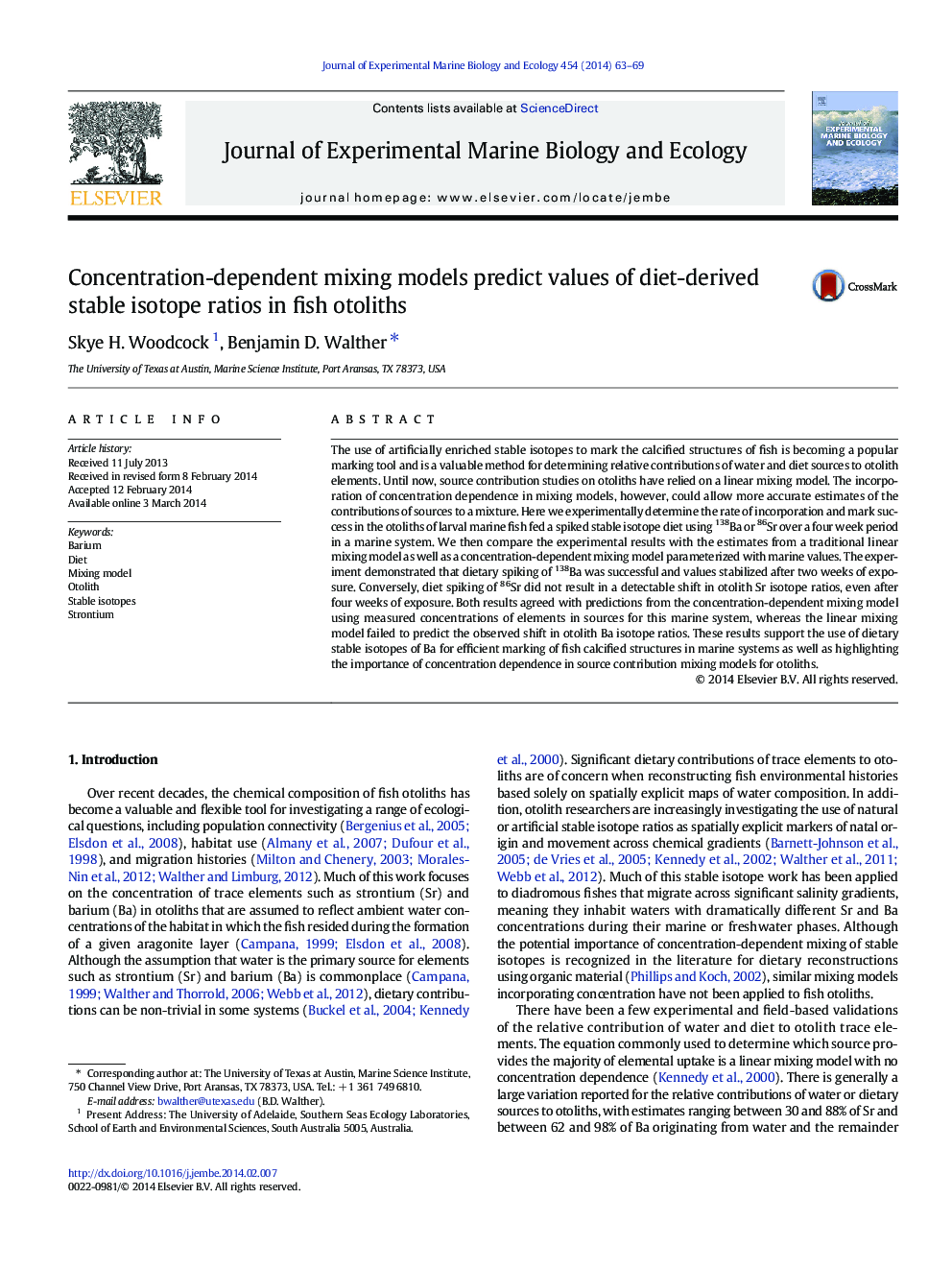| کد مقاله | کد نشریه | سال انتشار | مقاله انگلیسی | نسخه تمام متن |
|---|---|---|---|---|
| 4395598 | 1618421 | 2014 | 7 صفحه PDF | دانلود رایگان |

• Manipulated diet Sr and Ba isotope ratios to mark otoliths of a marine fish.
• Otolith Ba, but not Sr, isotopes were altered due to experimental diet manipulation.
• Otolith Ba isotopes shifted in as little as two weeks of exposure.
• Concentration dependent mixing model explained observed marking results.
• Diet marking with Sr impractical for marine species, but possible for freshwater.
The use of artificially enriched stable isotopes to mark the calcified structures of fish is becoming a popular marking tool and is a valuable method for determining relative contributions of water and diet sources to otolith elements. Until now, source contribution studies on otoliths have relied on a linear mixing model. The incorporation of concentration dependence in mixing models, however, could allow more accurate estimates of the contributions of sources to a mixture. Here we experimentally determine the rate of incorporation and mark success in the otoliths of larval marine fish fed a spiked stable isotope diet using 138Ba or 86Sr over a four week period in a marine system. We then compare the experimental results with the estimates from a traditional linear mixing model as well as a concentration-dependent mixing model parameterized with marine values. The experiment demonstrated that dietary spiking of 138Ba was successful and values stabilized after two weeks of exposure. Conversely, diet spiking of 86Sr did not result in a detectable shift in otolith Sr isotope ratios, even after four weeks of exposure. Both results agreed with predictions from the concentration-dependent mixing model using measured concentrations of elements in sources for this marine system, whereas the linear mixing model failed to predict the observed shift in otolith Ba isotope ratios. These results support the use of dietary stable isotopes of Ba for efficient marking of fish calcified structures in marine systems as well as highlighting the importance of concentration dependence in source contribution mixing models for otoliths.
Journal: Journal of Experimental Marine Biology and Ecology - Volume 454, May 2014, Pages 63–69